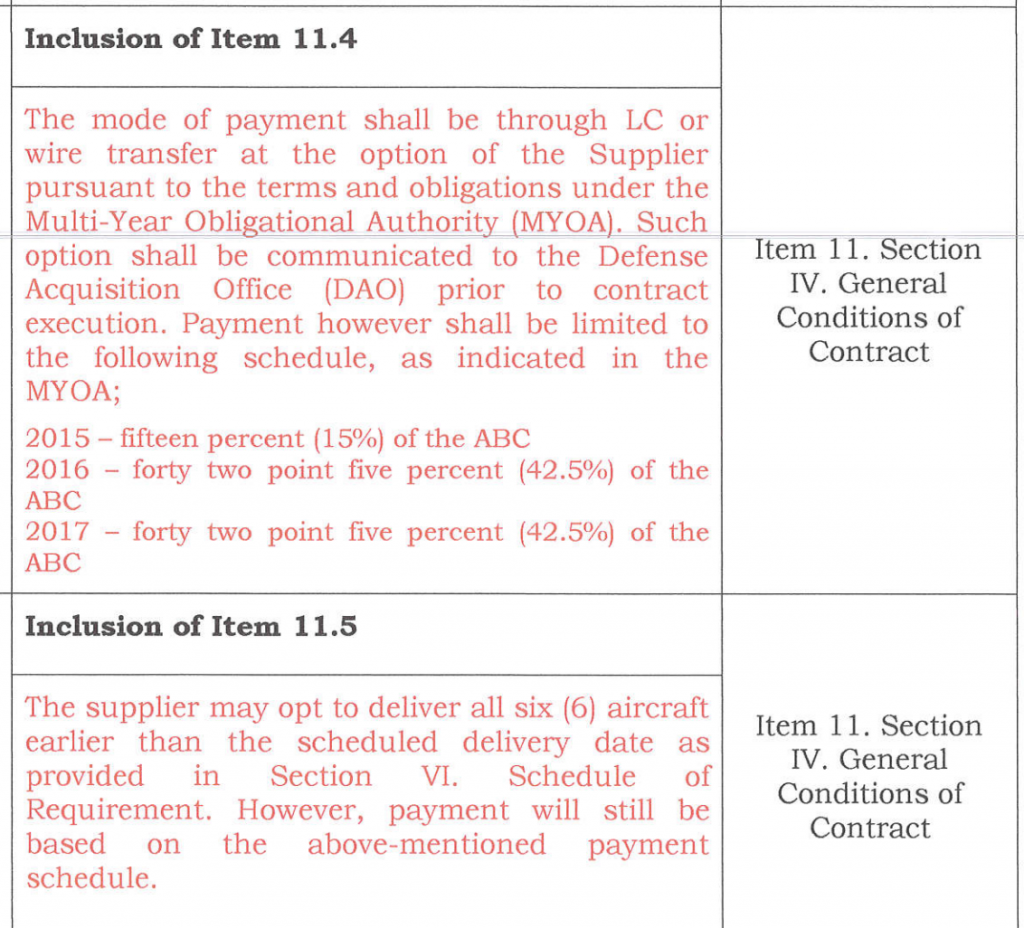The Department of Budget & Management released the official AFP Modernization Budget for 2018: P25B. This represents a fraction of the total DND budget of P149.7B — which includes everything from salaries, to veterans pension payments, to operational expenses that keep aircraft flying, ships sailing, and guns firing.
When evaluating whether or not the P25B modernization budget is sufficient to cover the various pending and ongoing acquisition projects of the AFP (see here), one must first recall a little understood — but game-changing development — known as the Multi-Year Obligational Authority (MYOA) that was first implemented in the latter half of 2010. (See here).
The MYOA was first used for the aborted Arroyo-era Multi-Role Vessel (MRV), which was then rebranded in the Aquino administration as the “Strategic Support Vessel” (re-using the name of the another Arroyo-era project that was originally based on a second-hand Japanese RO-RO vessel that eventually went nowhere). Since then, the MYOAs have been used for projects such as the Long Range Patrol Aircraft and the Close Air Support Aircraft.
The MYOA is significant because it unshackles the AFP from the limits of the national budget. It does so by using a simple concept that the average Filipino — who has ever made large consumer purchase (e.g., a car, a house, a refrigerator, or even a karaoke machine) — uses to buy what he or she needs while staying within the constraints of the household budget: “payments by installment”. The MYOA is essentially a credit card for the department that uses it — to include the DND.
Consider for the example the Close Air Support Aircraft project which is valued at 4,968,000,000. The MYOA document for the project actually breaks the project into the following annual installments: Year 1: 15%, Year 2: 42.5%, Year 3: 42.5%.
 |
While the original breakdown was pegged in 2016, and the actual contract signing didn’t take place till 2 year after, the breakdown formula shown above is comparable to how other projects were calculated, such as the still-pending Long Range Patrol Aircraft project.
Therefore for the first year, the funds required for the CASA project will only be approximately P754M. When applied the P25B annual budget, this would still leave P24.3B for other purchases.
If other projects also use the MYOA concept for their purchases . . .
. . . then instead of looking at the total Authorized Budgets for Contract of each purchase as the total the DND needs each year as its budget
. . . one only need to look at the percentage of the initial installment as the budgetary requirement for each year.
Furthermore modernization funds are NOT actually just limited to the General Appropriations Act. As per Section 6 of the Revised AFP Modernization Program, funds for the acquisition of AFP equipment is actually drawn from the AFP Modernization Trust Fund (AFPMTF). The AFPMTF sources funds from the following sources:
- The National Budget, particularly appropriations for the AFP Modernization
- Income from the Government Arsenal (once it being production for export)
- Sale of DND property
- Income from Public-Private partnerships
- Sale of excess defense articles and other uneconomically repairable equipment
- Funds from budgetary surplus
- Donations from local and foreign sources (this is how the AFP gets funding from Malampaya)
In summary, the MYOA facility, and the flexible funding nature of the AFP Modernization Trust Fund means that the size of AFP Modernization budget is does not actually limit what the AFP can do, as it did in the years before 2010. Even if the AFP were limited to the national budget as its source of funding, the P25B allocation — if done right — would simply represent the installment payment for that year. Thus, there remains much cause for optimism in the coming year, and the years ahead.


